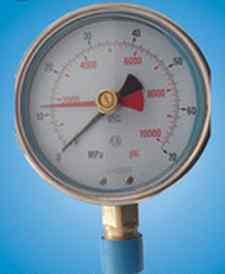

MedFriendly®


Baresthesiometer
A baresthesiometer is an instrument designed to measure an
individualís sense of pressure or application of weight. The
device was created by Eulenburg and was made of a spiral
spring of modifiable tension (via a guiding rod) attached to a
hard-rubber plate. The strength of pressure on the spring is
shown on a dial plate connected to the rod. Each figure on the
dial represents one gram of pressure. The baresthesiometer
was invented by Eulenburg, who found that the face was most
sensitive to pressure changes. Except for minimal pressures,
the more the initial pressure is, the more that pressure must be
increased for the body to detect a change in pressure.
A baresthesiometer.
FEATURED BOOK: Measurement and Instrumentation: Theory and Application
Eulenburgís device was further modified by Beard and Rockwell, who created a
cylindrical device that looked like a syringe. A flat disk at the end of the device was
placed against the patientís skin while the examiner pressed a piston at the other end.
This exerts varying degrees of pressure represented by scales on the instrument. A
baresthesiometer is also known as a piesmeter.
Baresthesiometer comes from the Greek word "baros" meaning "weight," the Greek word
"aesthesis" meaning "sensation," and the Greek word "metron" meaning "measure." Put
the words together and you have "weight sensation measure."
"Where Medical Information is Easy to Understand"™















